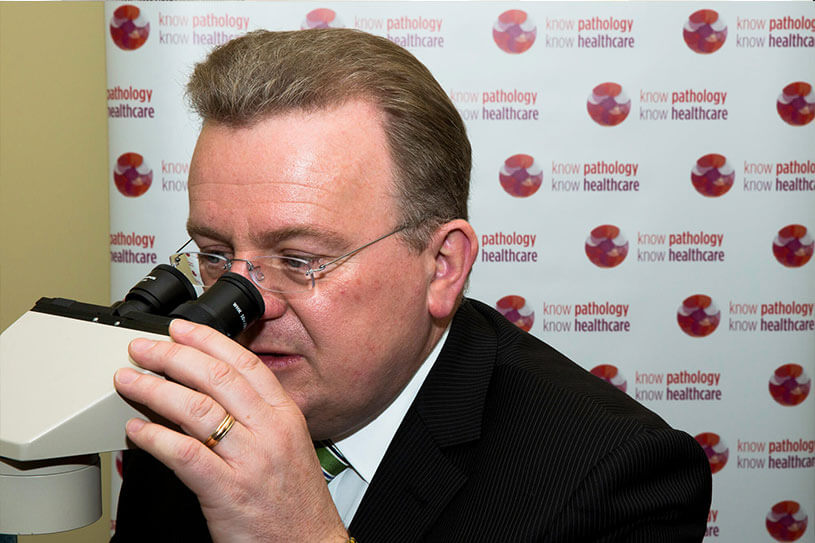A lab worker loads spun blood tubes onto a machine for processing and testing
Many people with coeliac disease know that getting a confirmed diagnosis can be a long process, so how exactly is this done, and who is responsible for getting the test results?
18th November 2015 is International Pathology Day so why not sign up and tell us your coeliac disease diagnosis story via the comment box on our homepage
When a doctor suspects coeliac disease, the first pathology test that is usually ordered is coeliac serology. Serology testing looks for the presence of specific antibodies in a person’s blood. Antibodies are normally the ‘good guys’ – they attack infections. In autoimmune conditions like coeliac disease, autoantibodies form, which mistakenly attack the body’s own organs. The coeliac serology tests look for these autoantibodies which attack the small bowel (small intestine) as part of an abnormal reaction to gluten.
The autoantibodies are found in serum – the watery component of blood in which red and white blood cells float as they pass through the body. To obtain serum for testing, the blood tube is sent to the pathology laboratory where it is spun in a centrifuge at 3000 revolutions per minutes. That’s two to three times faster than your washing machine on fastest spin. Doing this separates the yellow serum from the heavier red blood cells, which sink to the bottom of the tube.
Once the tube of blood has been spun it is loaded onto a machine where a pipette takes a few drops of the serum and adds them to reaction chambers (small plastic or glass disposable vials) containing various chemicals. Each reaction chamber will produce a specific reaction if the blood contains the autoantibodies that the test is looking for.
This process is overseen by a highly trained medical scientist who will interpret the results from the machine before they are delivered to the patient’s doctor.

MP Bruce Billson, who has been diagnosed with coeliac disease, visited a pathology laboratory earlier this year and showed his support for the Know Pathology Know Healthcare campaign
Positive serology results show the person’s body is producing an inappropriate immune response, but for a confirmed diagnosis of coeliac disease, a biopsy is needed.
The patient is given a light anaesthetic and a small sample of tissue is collected from the lining of the small bowel. The tissue sample is typically only around 3mm in diameter.
The specimen is put into tissue fixative substance, usually formalin and sent to the pathology laboratory.
A pathologist or medical scientist then performs what’s known as a gross examination – this means looking at the sample without a microscope. This is done to record what can be seen by simply looking at, measuring, or feeling the tissue, for example its size, colour and consistency.
The sample is then processed and placed in hot paraffin wax, which sets as a solid block with the tissue within it.
Next, a microtome instrument is used to cut the block into very thin slices. The slices need to be thin enough to let light through in order for cells to be seen under a microscope. Slices are placed on glass slides, which are dipped into different stains or dyes that change the colour of the tissue to make cells more visible under a microscope.
The pathologist then examines the slides, looking for changes consistent with coeliac disease. When viewed under a microscope, healthy bowel tissue features small ‘finger-like’ projections called villi. These are typically shortened in coeliac patients. The pathologist looks for the extent of any shortening and for the depths of the ‘crypts’ (the indents between villi) to see if these have changed.
The pathologist will also look for the presence of lymphocytes, a type of white blood cell, in the upper layer of the tissue and for increased inflammatory cells.
Once the review is complete, the pathologist prepares a report containing their findings for the patient’s doctor. It is important that the doctor has the information from both the blood test and the biopsy combined with the patient’s history in order to make a confident diagnosis of coeliac disease.
Pathology is clearly vital for people with coeliac disease. Tell us your coeliac disease story and why you value pathology, by signing up here www.knowpathology.com.au

